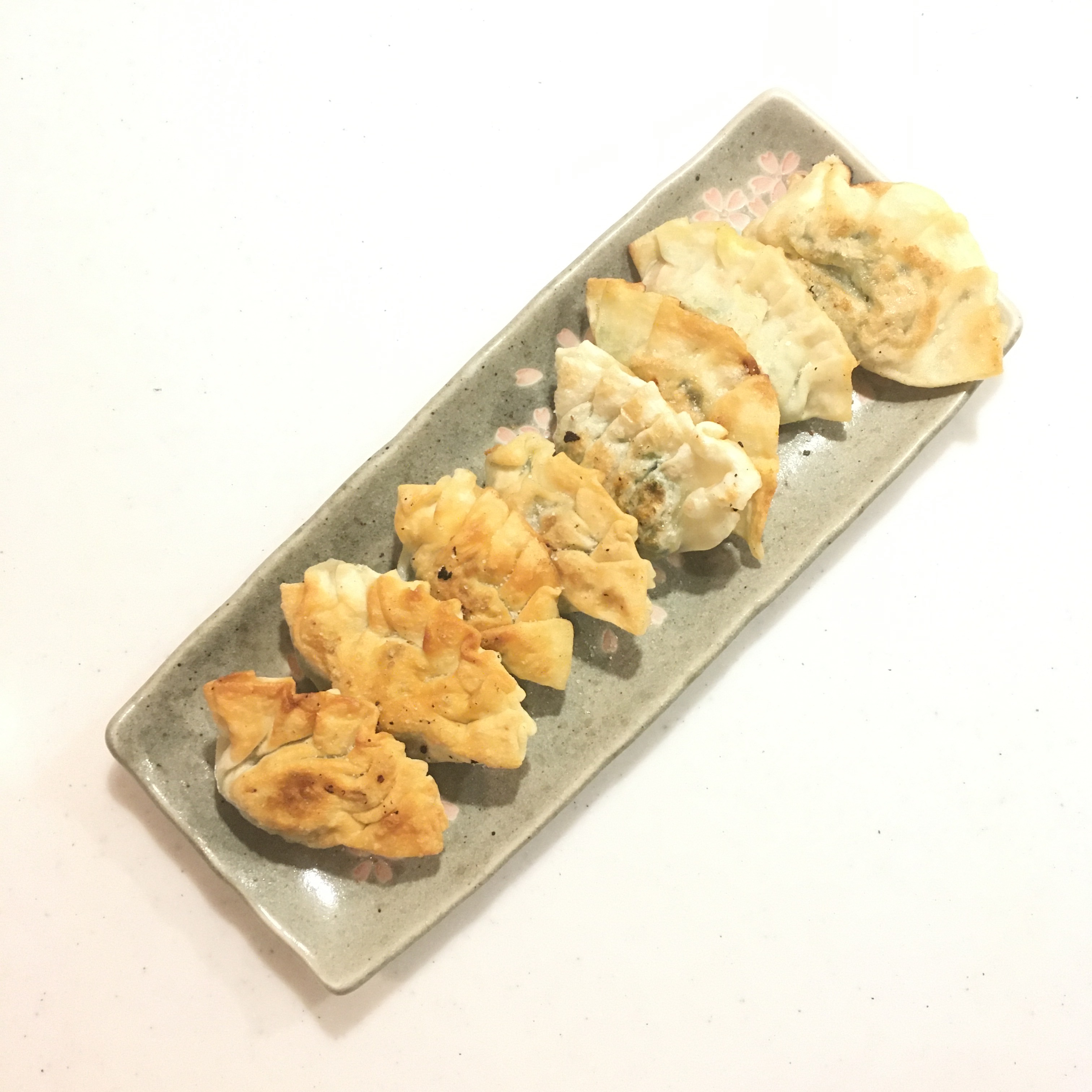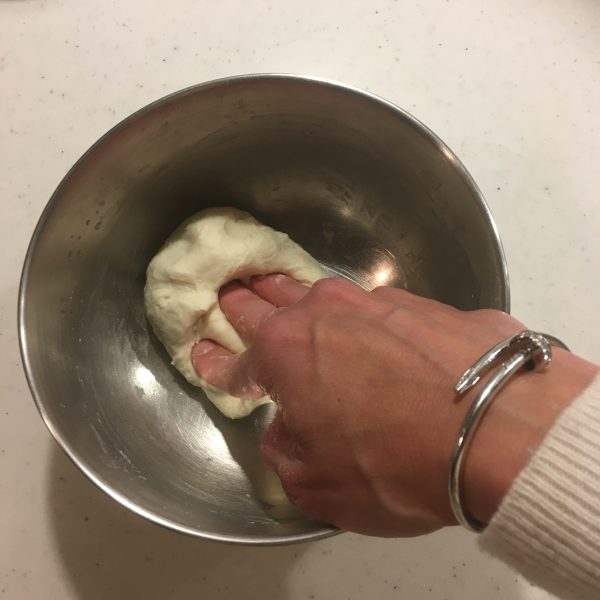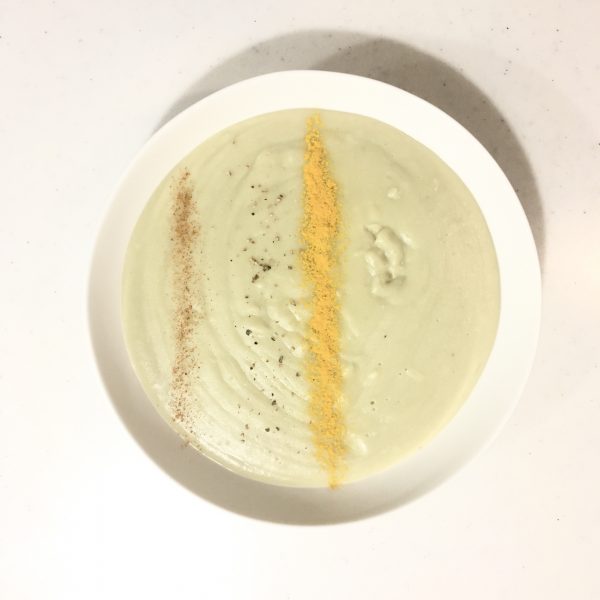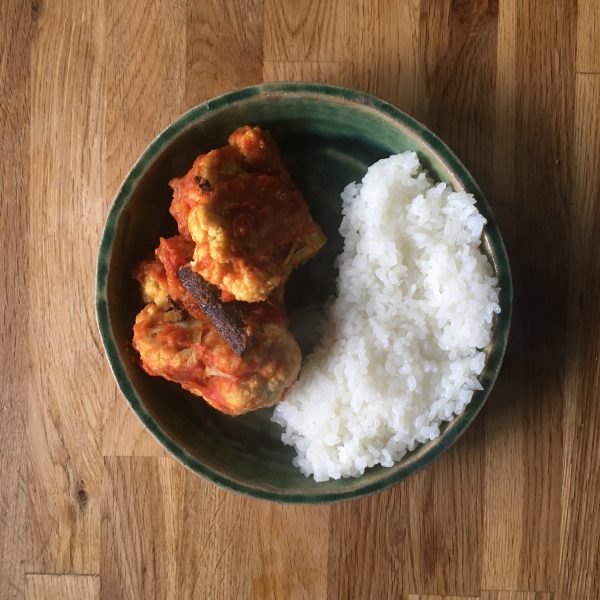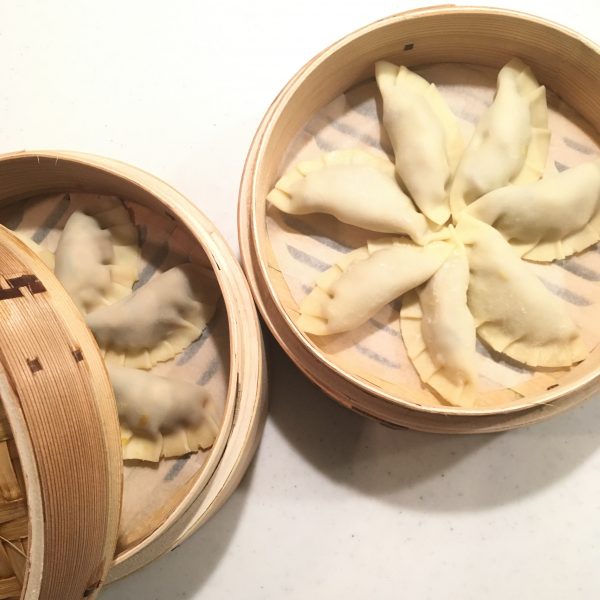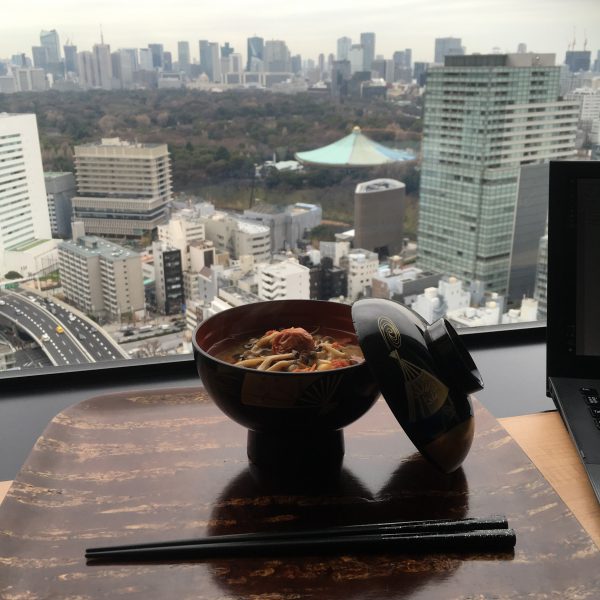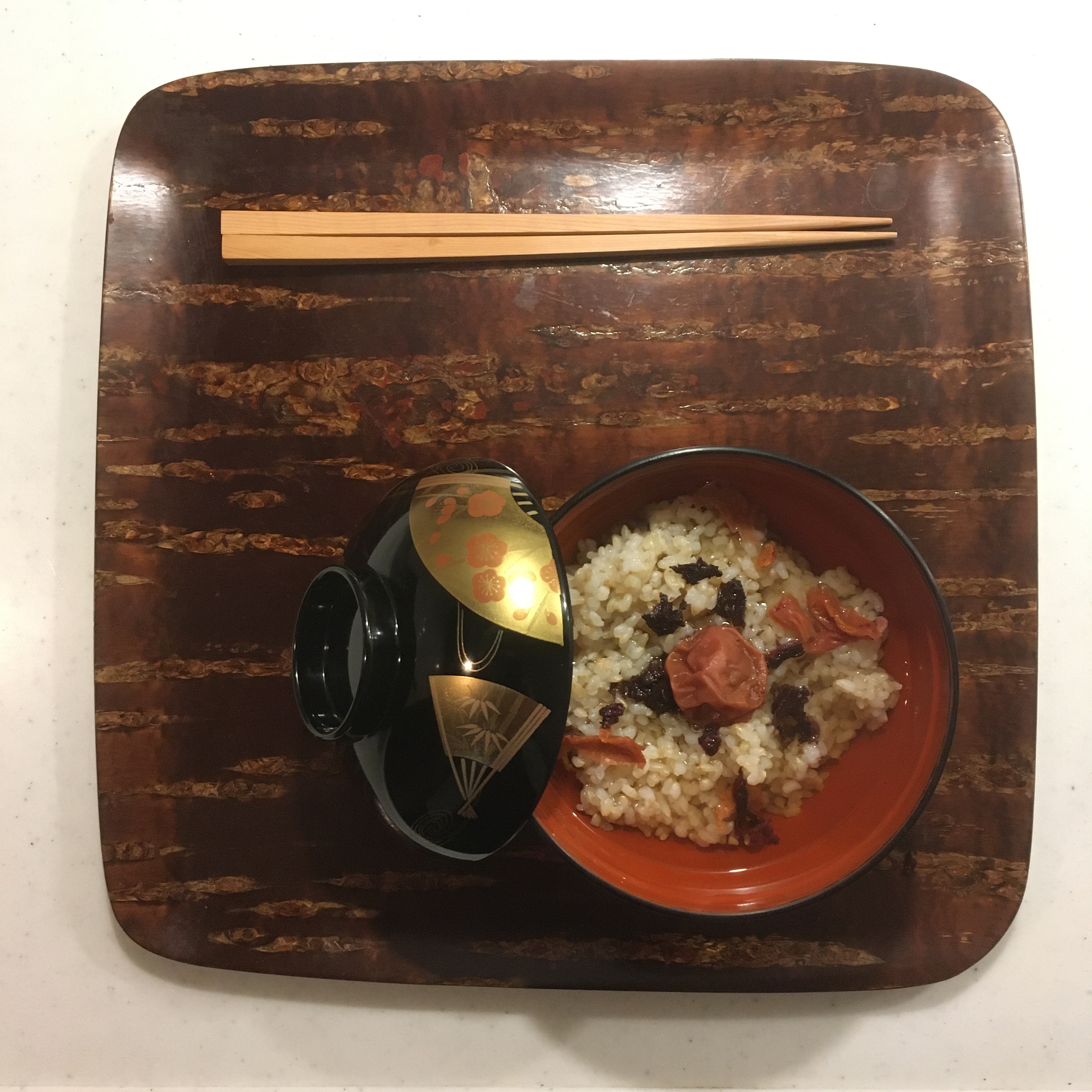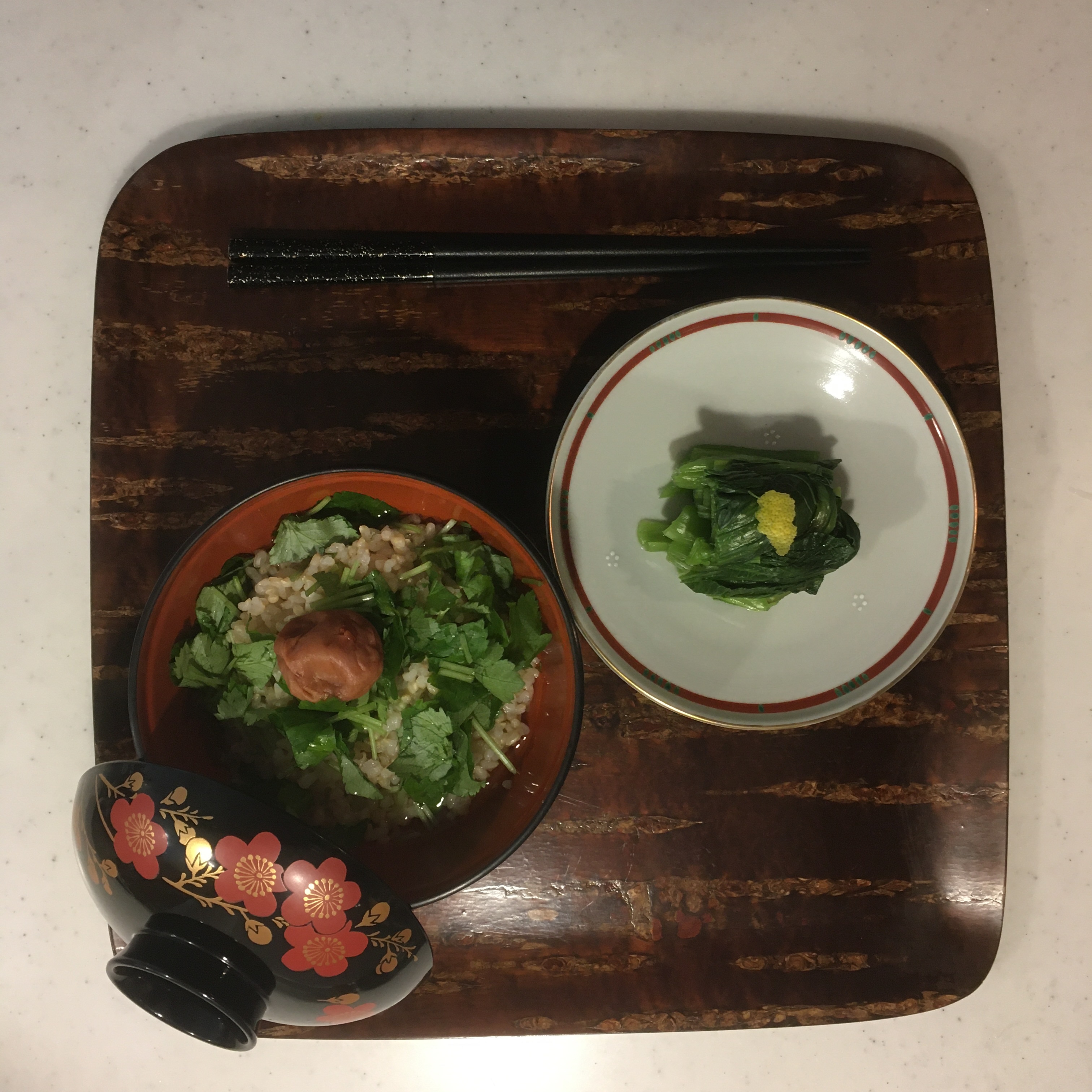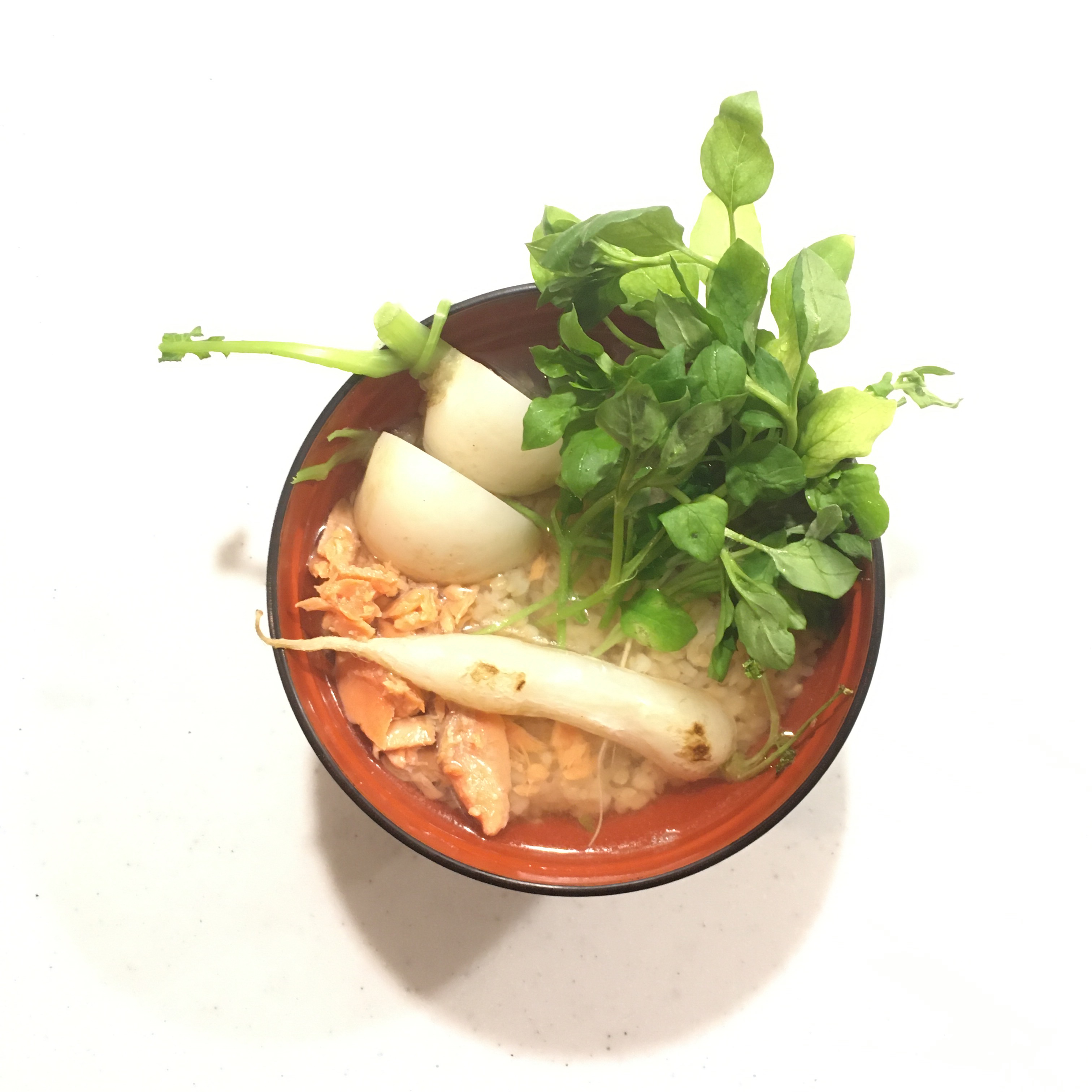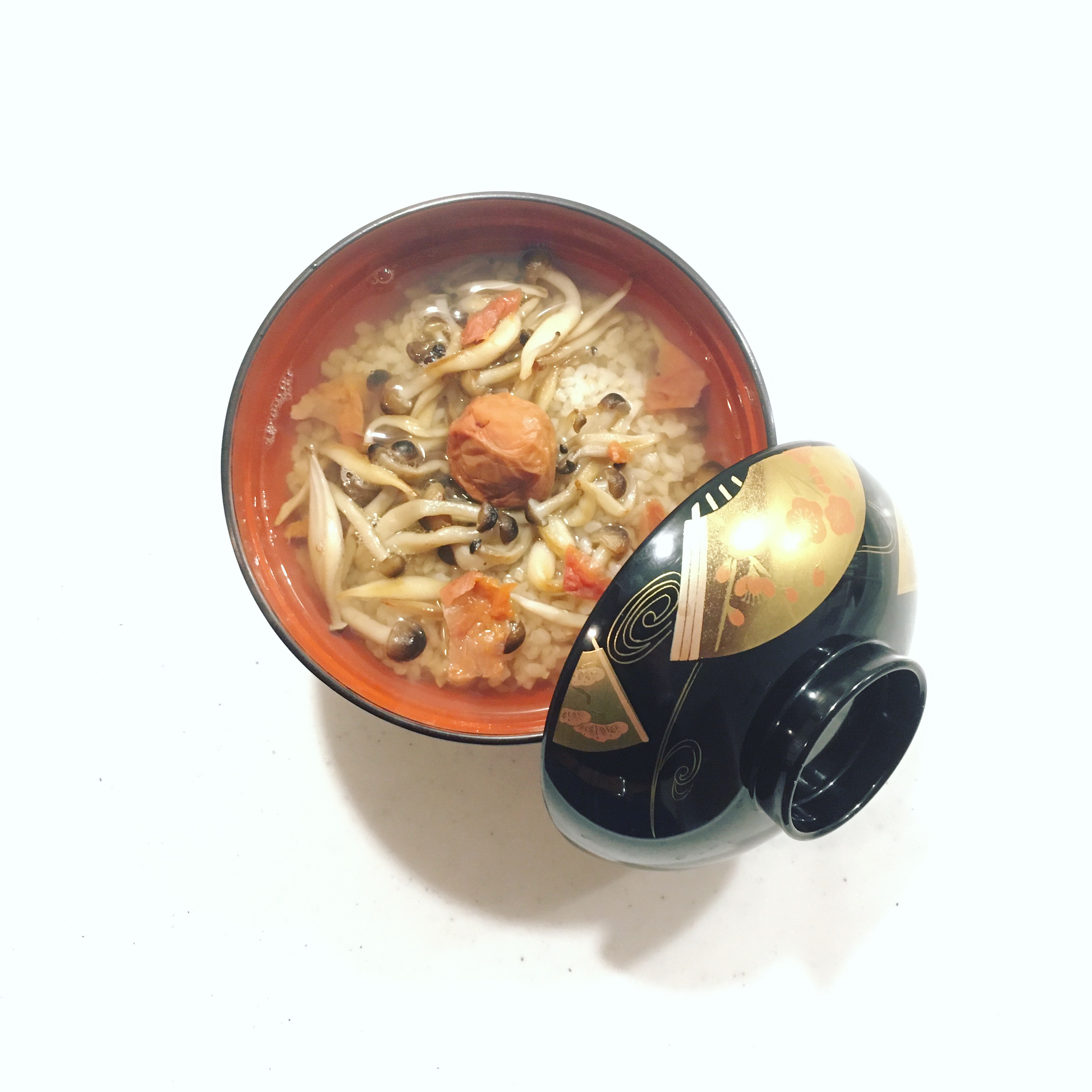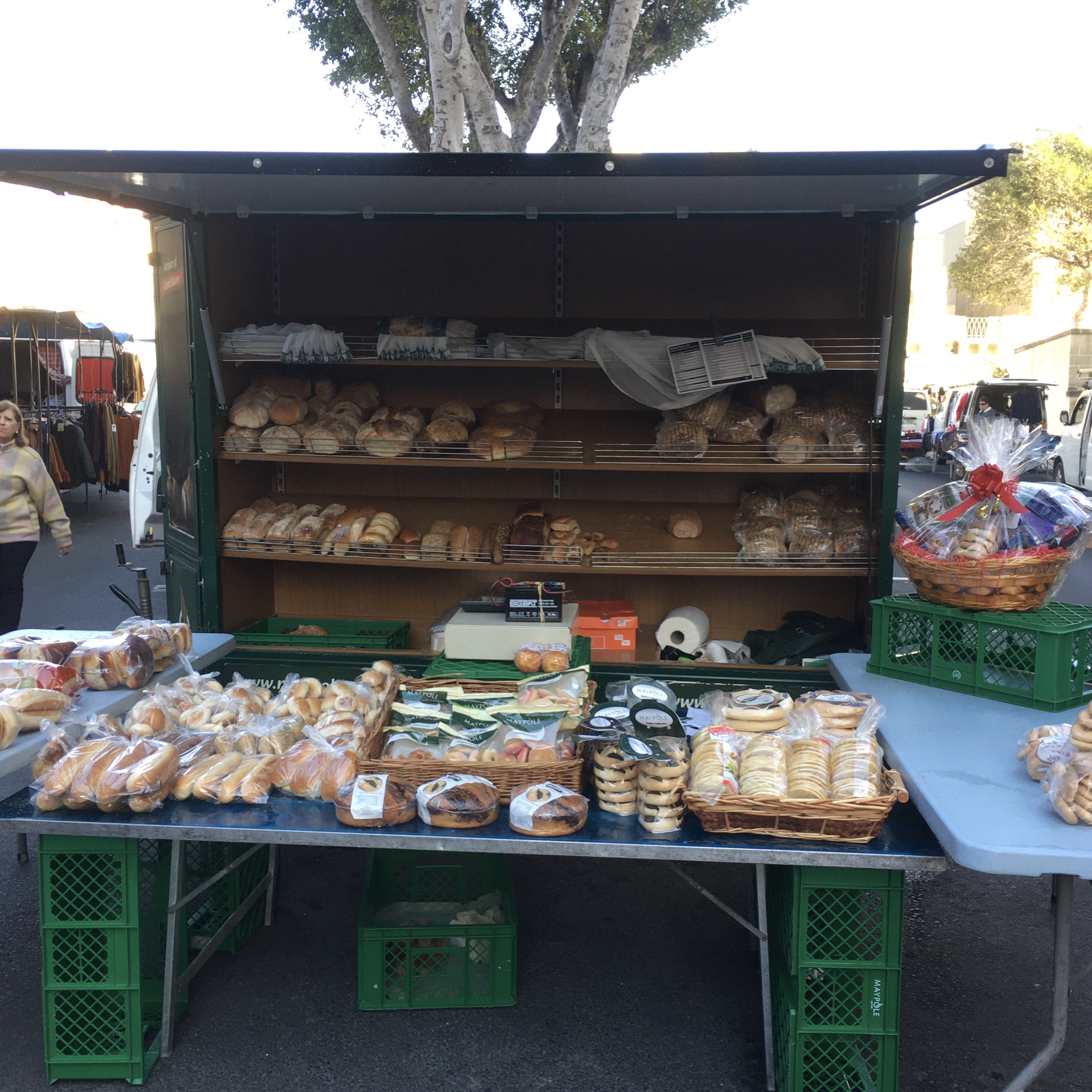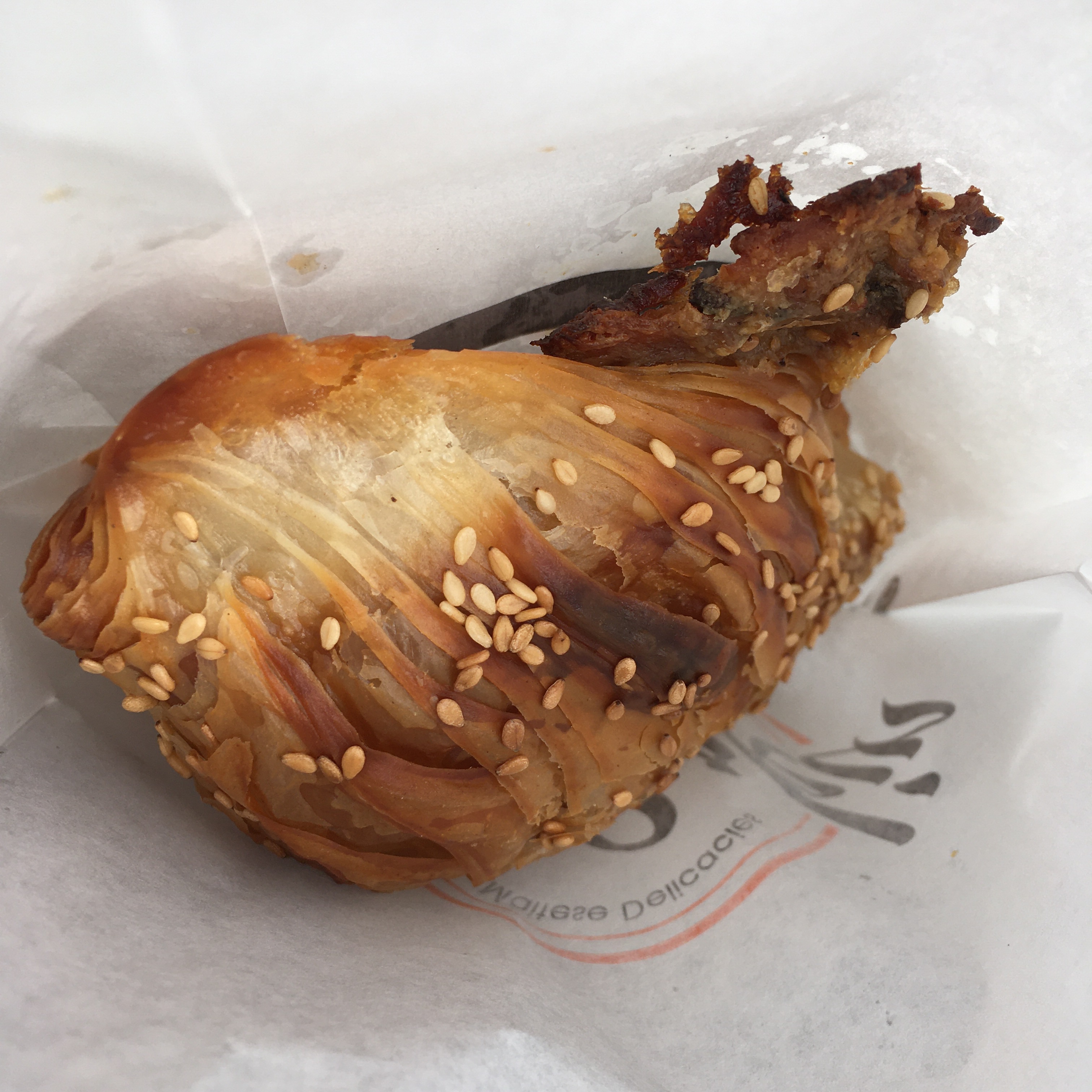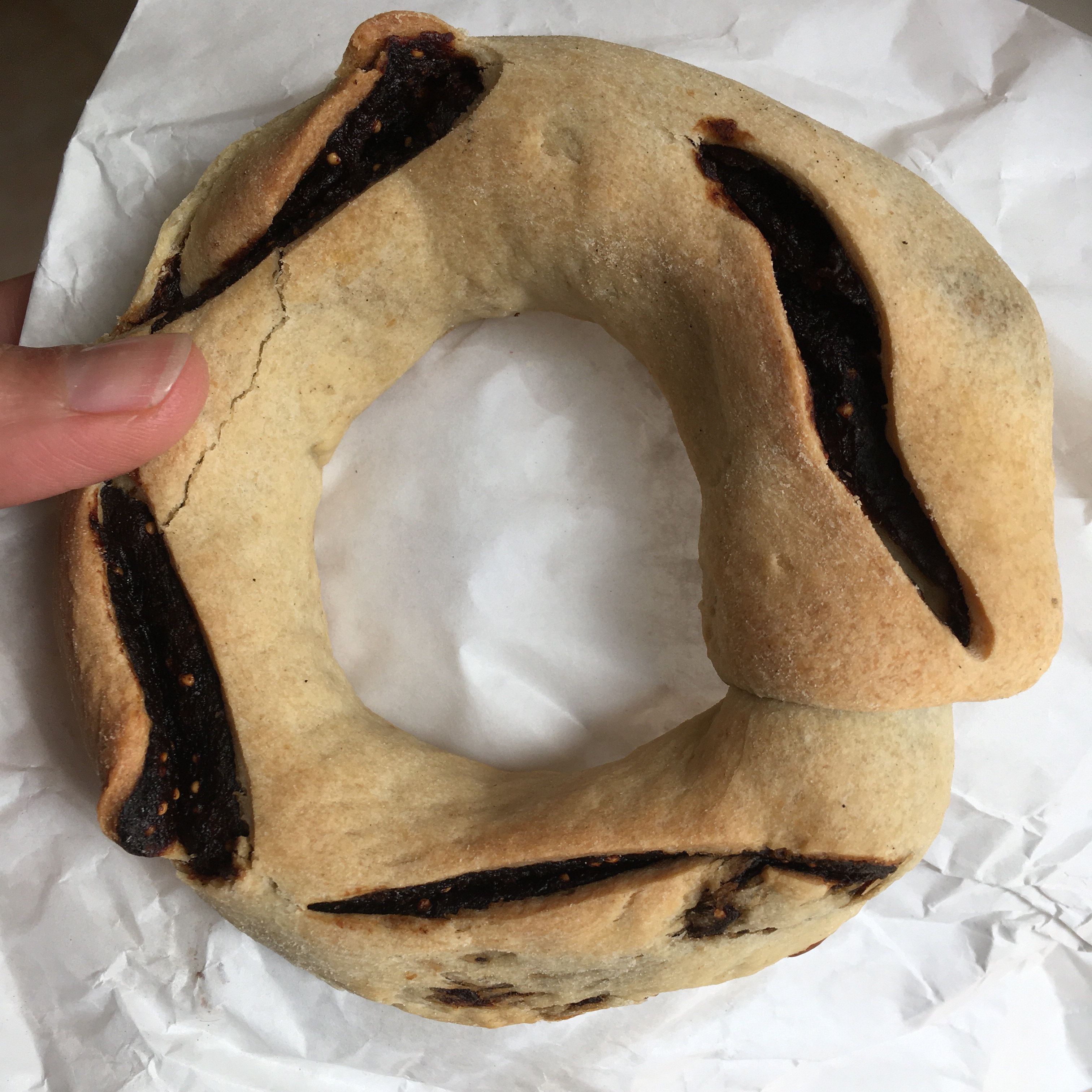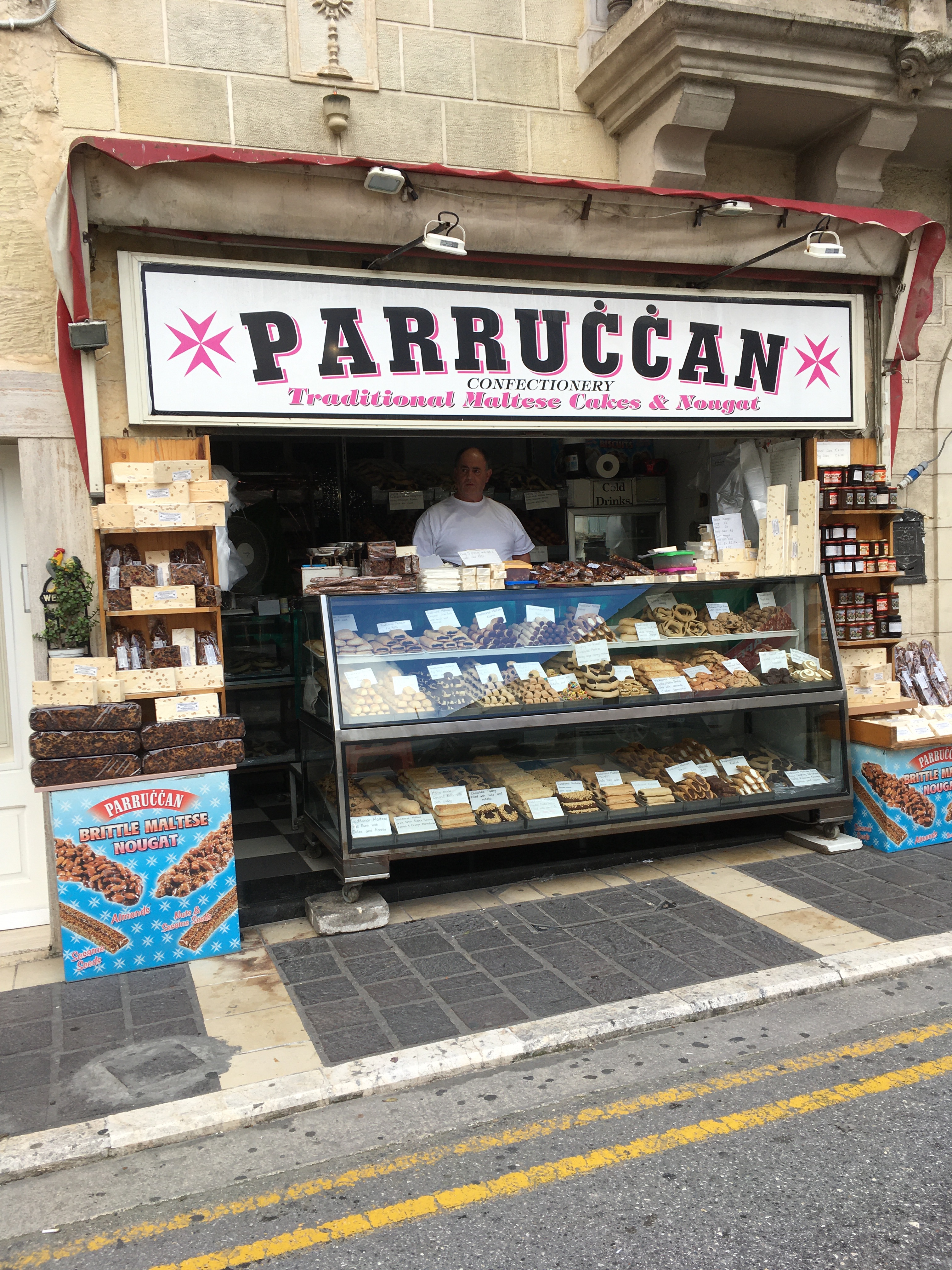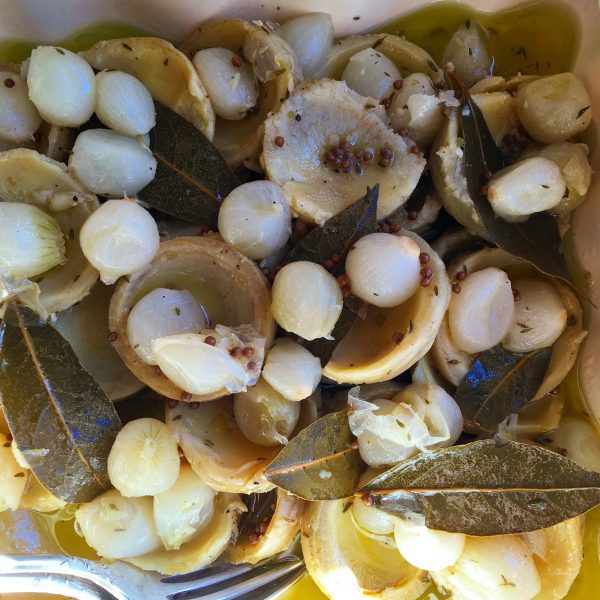In an attempt to practice my gyoza dough making and rolling I decided to make some pan fried ravioli using a vegan dough recipe which is only water and flour, and therefore the recipe of gyoza skin, and filled with Japanese salted salmon, spinach and ricotta. So I found it hard to know how to call them… these are not strictly speaking ravioli, nor gyoza either… but a kind of mixture of both. Well what is important is that they were really delicious and it doesn’t take much time to make them and it was a good rehearsal for making gyoza soon. Indeed, ravioli are made from a flat sheet of pasta, but for gyoza they are rolled one by one, so I needed a bit of practice to remind myself how much dough is needed to roll one skin. All you need is just a nice top well dusted to roll them quickly. So here is my recipe…

Pan fried ravioli (for 16-20 pieces)
For the dough:
– 100g of flour
– water
– a pinch of salt
– more flour for dusting
In a bowl mix the flour and salt, add water bit by bit while kneading. Stop when the dough is soft and smooth. Leave to rest for an hour if you have time.
Filling:
Choose what pleases you, I used Japanese salted salmon, spinach and ricotta. I boiled and drained very well the spinach. Add the salmon, and a bit of ricotta. As the salmon is already quite salty, I used nothing but a bit of black pepper.
Ok, then! Now the fun can start!!!
You need a clean top or a wide wooden cutting board. Dust it generously. Pick a 1cm diameter ball of dough and roll it with a rolling pin to the thinness and diameter you like. I like thin, but not too thin as filling is then a pain. So I rolled to about 8cm diameter. Then filled and closed the ravioli. When I made enough pieces to fill a frypan I heated it, and greased it with olive oil. Then throw the ravioli. I cooked at medium heat until golden, flipping them regularly. That’s it!
